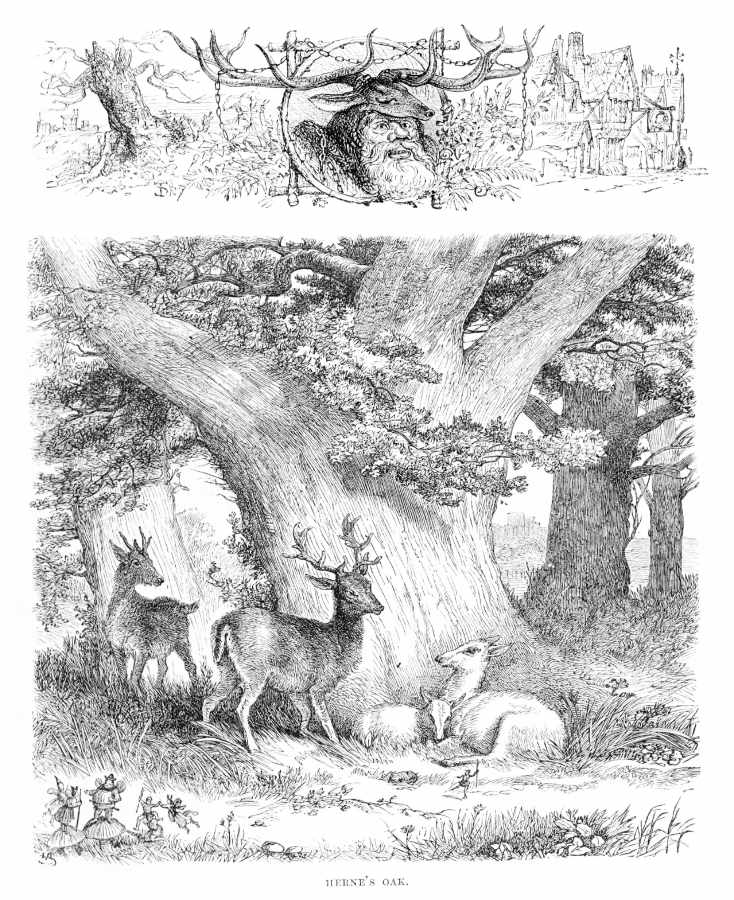In English folklore, Herne the Hunter is a ghost associated with Windsor Forest and Great Park in the English county of Berkshire. He is said to have antlers growing from his head, ride a horse, torment cattle, and rattle chains. The earliest mention of Herne comes from William Shakespeare’s 1597 play The Merry Wives of Windsor, and it is impossible to know how accurately or to what degree Shakespeare may have incorporated a real local legend into his work, though there have been several later attempts to connect Herne to historical figures, pagan deities, or ancient archetypes.
| Alias Herne the Hunter |
| Real Names/Alt Names Herne the Hunter |
| Characteristics Ghost, The Renaissance, British, Scandinavian |
| Creators/Key Contributors Unknown |
| First Appearance Shakespeare’s The Merry Wives of Windsor, likely first performed in 1597 at Windsor before Queen Elizabeth I |
| First Publisher ○ |
| Appearance List The Merry Wives of Windsor (1602, Quarto; 1623, Folio) by William Shakespeare; Herne’s Oak, Windsor (1840s–1850s) — Numerous Victorian paintings and illustrations; Windsor Castle (1843) by William Harrison Ainsworth — Historical romance novel featuring Herne the Hunter and Windsor legends; Germania of the Frankfurt Parliament (1848) by Philipp Veit — Parallel national personification; Falstaff (1893) by Giuseppe Verdi — Comic opera based largely on Merry Wives of Windsor; Victoria and Merrie England (Ballet, 1897); Merrie England (1902) by Edward German — Comic opera |
| Sample Read The Merry Wives of Windsor [PG] |
| Description In English folklore, Herne the Hunter is a ghost associated with Windsor Forest and Great Park in the English county of Berkshire. He is said to have antlers growing from his head, ride a horse, torment cattle, and rattle chains. The earliest mention of Herne comes from William Shakespeare’s 1597 play The Merry Wives of Windsor, and it is impossible to know how accurately or to what degree Shakespeare may have incorporated a real local legend into his work, though there have been several later attempts to connect Herne to historical figures, pagan deities, or ancient archetypes. |
| Source Herne the Hunter – Public Domain Super Heroes Wiki |

